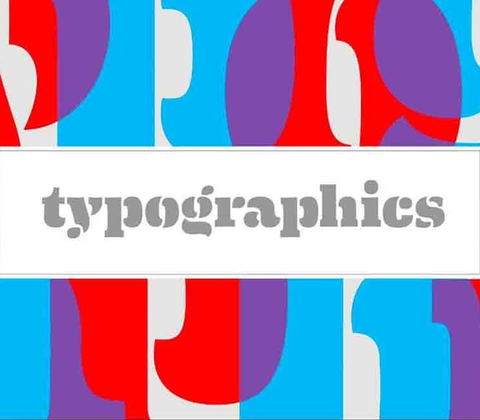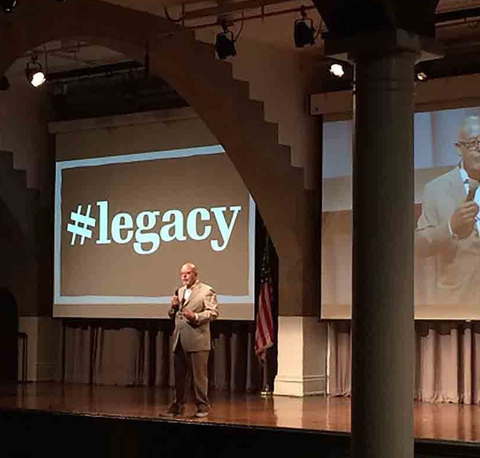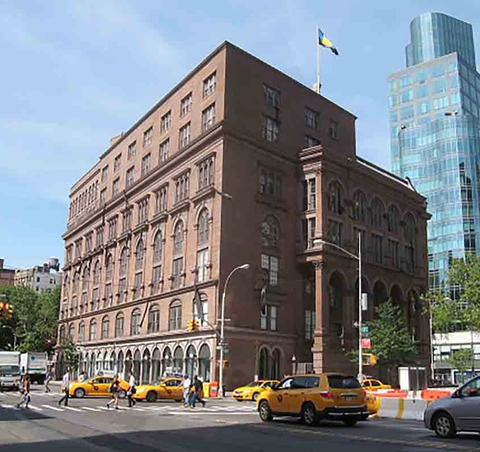The definitive guide to Typographic, New York
February 27, 2020
What is Typographics?
Typographics is largely described as a design festival for people who love to use type. This is the second year the festival is happening. It takes place in Manhattan over the span of multiple days. During the festival, attendees can interact with design and typography like never before. There will be talks, workshops, tours and more, all dedicated to the history, present and future of typography. Designers can share and experience multitudes of perspectives on typography and design elements having to to do with type, both digital and in print.
Subject matter for workshops, talks and tours explores all the avenues and worlds surrounding typography that you can imagine. They can include, but aren’t limited to, hand-lettering, Sign painting, calligraphy, font technology, digital publishing, responsive design, the effect of typography on our world, the psychology of typography and more.
Who Are the Speakers?
At this years’ conference, you can expect to hear varying opinions, advice, teachings and perspects from top designers from around the globe, as well as see inspiring examples of their work. The schedule includes speakers from Typologic, Danilo Design Group, Lost Type Co-Op, The Letter Office, Doyle Partners, Google Design, Font Bureau, Memo Productions, IL magazine, Synoptic Office, Cadson Demak, Bloomberg Businessweek, Parsons the New School for Design, and more.
What Should I Expect to Learn?
The 2015 Typographics festival was an enormous success, so it’s being done again this year, bigger and better. The 11-day event consists of workshops and tours focusing on typography. Each speaker will be delivering a talk on their area of passion and expertise. You can expect to be able to learn about topics like:
- the mechanics of reading and on-screen legibility
- problems found in typographic cultures around the world
- how branding affects the public environment
- typography’s expansion on the web in general
- typography for the entertainment industry
- challenging typography convention
- typography in motion
The event is organised by Cooper Union, Herb Lubalin Study Center of Design
and Typography and Type@Cooper.
How Can I Attend?
The conference itself takes place June 17th and 18th. All of the surrounding tours and workshops take place between June 13th and 23rd. Most of the festival is held at The Cooper Union in the East Village. There are 5 different ticket types: Professional, Educator, Student, Small Bundle (5-9 tickets) and Large Bundle (10+ tickets). Tickets are on sale until June 18th.
If you can’t attend personally, the entire conference will be photographed and professionally live streamed, so you can enjoy the content from the comforts of home.
If you attend the conference, you will receive a 10% discount on Type@Cooper’s workshops and tours. Titles include “Making Faces (& Other Emoji)”, “Sign Painting”, “Type Design for None-Type Designers” and so much more. Just make sure to check for the discount code on your PDF conference ticket and use it to register.
Articles

In the period since COVID forced many of us back home and out of the office, remote work has become the new norm for many. The flexibility of working from home, especially for those with small children, is very compelling, but making a productive workspace is more than setting up a desk in the spare room. More people are seeking to create functional and comfortable workspaces in their homes, however, it can be difficult to strike the right balance between a professional office space and a cosy home environment. Here are some tips for designing a home workspace that meets both of these needs: Dedicate a specific area for work Designating a specific area for work is essential for separating work from leisure time. This could be a separate room or just a corner of a room. It is important to make sure that the workspace is free from distractions and clutter, as this will help you stay focused and productive. Choose the right furniture Ergonomic furniture is key to a comfortable and productive workspace. Invest in a comfortable chair, a desk that is the right height, and a good-quality mouse and keyboard. If you are prone to back pain, consider a standing desk. Add personal touches Just because your workspace should be functional, doesn’t mean it can’t be personal. Add photos, plants, and other personal items to make the space feel like your own. This will help create a sense of comfort and make you feel at home in your workspace. Good lighting Good lighting is essential for a comfortable workspace. If possible, place your desk near a window for natural light. If not, invest in a high-quality desk lamp to provide bright, even light. Keep it organised An organised workspace will help you stay productive and focused. Use desk organisers, filing cabinets, and other tools to keep your work area free from clutter. A clean and organised workspace will also help you start each day with a clear mind. Consider your work style Think about the type of work you do and how you like to work. If you prefer a minimalist workspace, opt for a simple desk and a few basic supplies. If you need space for multiple screens and other technology, make sure you have enough room to work comfortably. Take breaks It’s important to take breaks throughout the day to avoid burnout. Step away from your desk, go for a walk, or do some stretching exercises to clear your mind and recharge.












